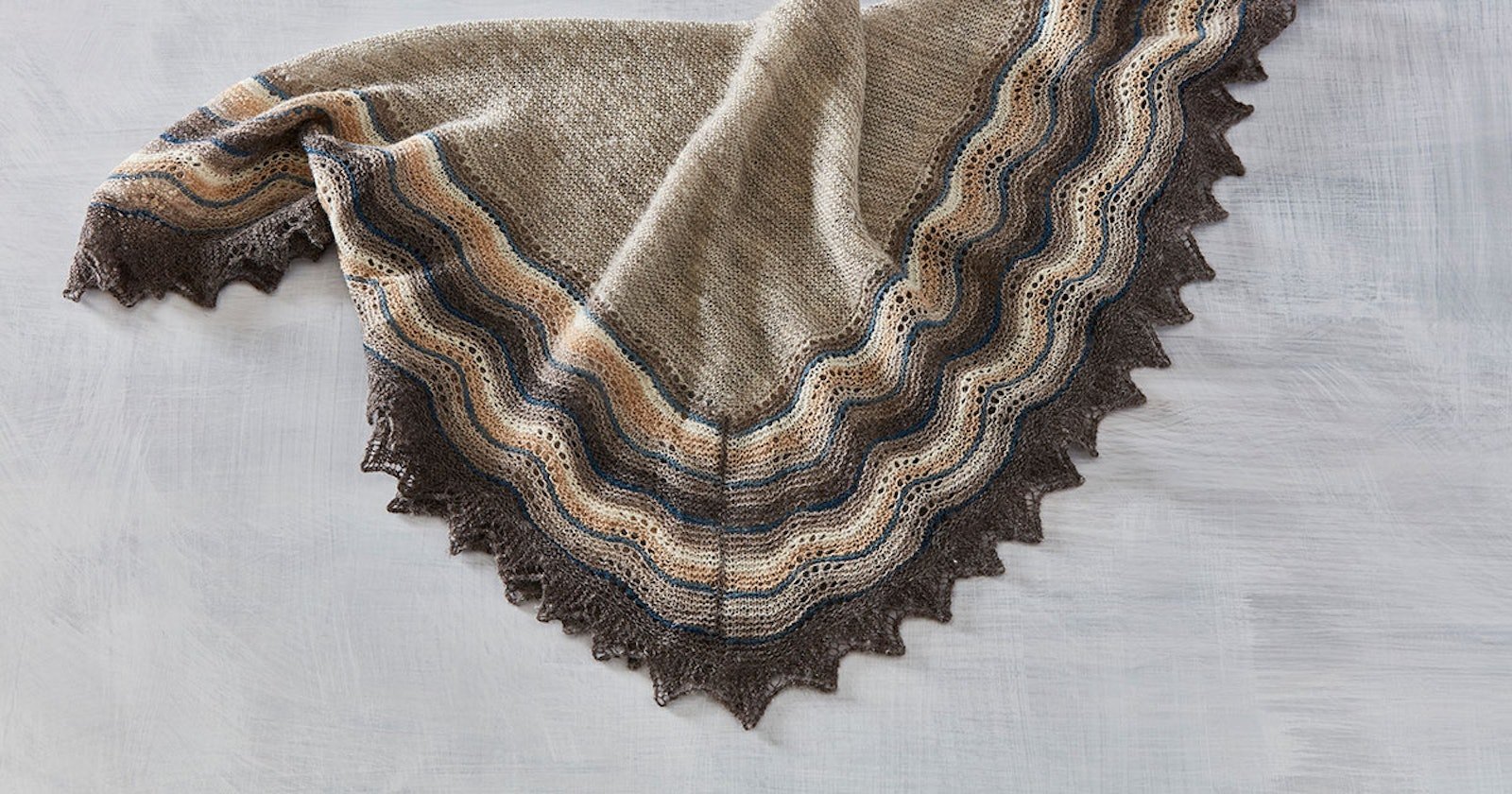They tell me that one quick way to set a Shetlander’s teeth on edge is to talk about hap shawls. It’s why I wince at a chai tea latte with milk: in India, where “chai” means tea, it’s always tea with milk. “Hap shawl” is both redundant and not quite accurate. For our handspun hapalong, spinners have a few questions.
_ What Is A Hap?_ In her introduction to The Book of Haps, Kate Davies explains that “hap” is a word that has to do with wrapping and warming, either as a noun or a verb. In her article in Fall 2018 Spin Off,Debbie Held calls it “the blanket-sized utilitarian wrap.” She quotes Elizabeth Johnston, who says, “A hap is a garment which anyone can use to wrap up warmly [in]—that’s the definition of the word.” Kate Davies’s book takes an expansive look at haps, including hap designs in all kinds of shapes—triangle, square, rectangular, or more organic.
Americans usually knit blankets for new babies, but Shetlanders knit haps. Elizabeth lent us a beautiful handspun hap that she naturally dyed and knitted for a baby in her family.
The Woodland Hap Shawl by Rebecca Blair measures 62” square—a very generous hap indeed.
_ How Do I Match Yarn & Pattern for a Handspun Hap?_ You may have heard that Spin Off is having a spinalong and knitalong to make a handspun hap. The preparation began on January 1, and spinners who are interested in prizes could start spinning on January 14. Reading through spinners’ plans for what kind of yarn and pattern to use for the challenge, I realized that a hap is the perfect handspun project: A hap is flexible enough to let you use yarn of almost any grist or fiber content.
Kate Larson identified some of her favorite hap patterns (including a crocheted one), but some spinners were wondering whether they needed to use a yarn similar to the one in the patterns they liked. Absolutely not! Here’s what you need to plan a handspun hap:
Sara Greer designed the Handspun Shetland Half Hap inspired by Rebecca Blair’s design but using a woolen-spun bulky-weight yarn. Photo by George Boe
1. Gauge Work a gauge swatch to make sure that your yarn won’t produce a shawl as big as a tent or as small as a napkin. You can make a laceweight, sportweight, or worsted-weight hap, maybe even with the same pattern.
2. Drape A hap doesn’t need to be slinky or flowing, but between your yarn’s structure and the density of the fabric, make sure it doesn’t stand up on its own.
3. Warmth Whether you use fine linen to chase a summer chill or qiviut to keep toasty in Antarctica, choose a yarn that will make your hap as warm (or cool) as you like.
—Anne Merrow
Featured Image: Elizabeth Johnston spun, dyed, and knitted this hap for a new baby. Photo by George Boe



